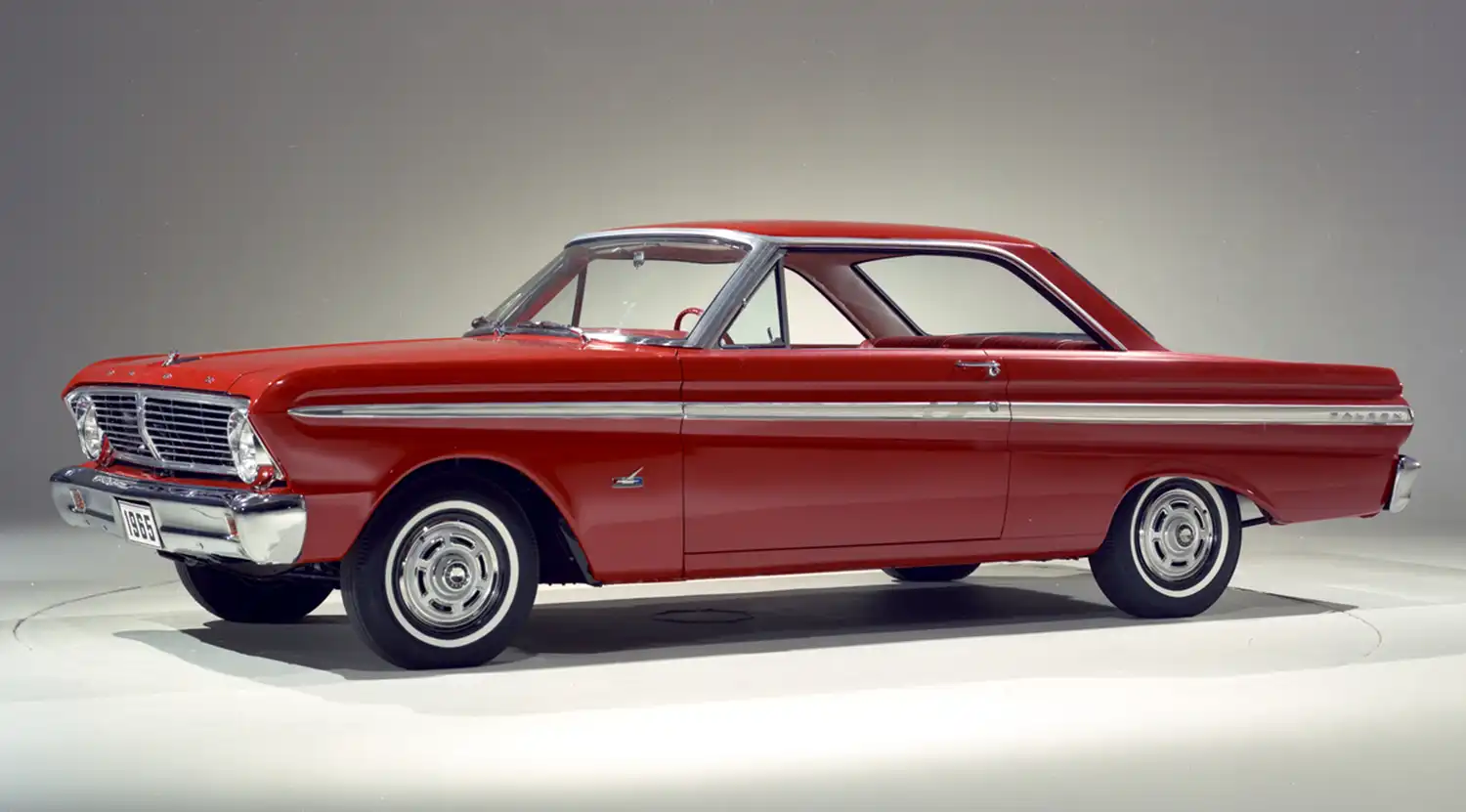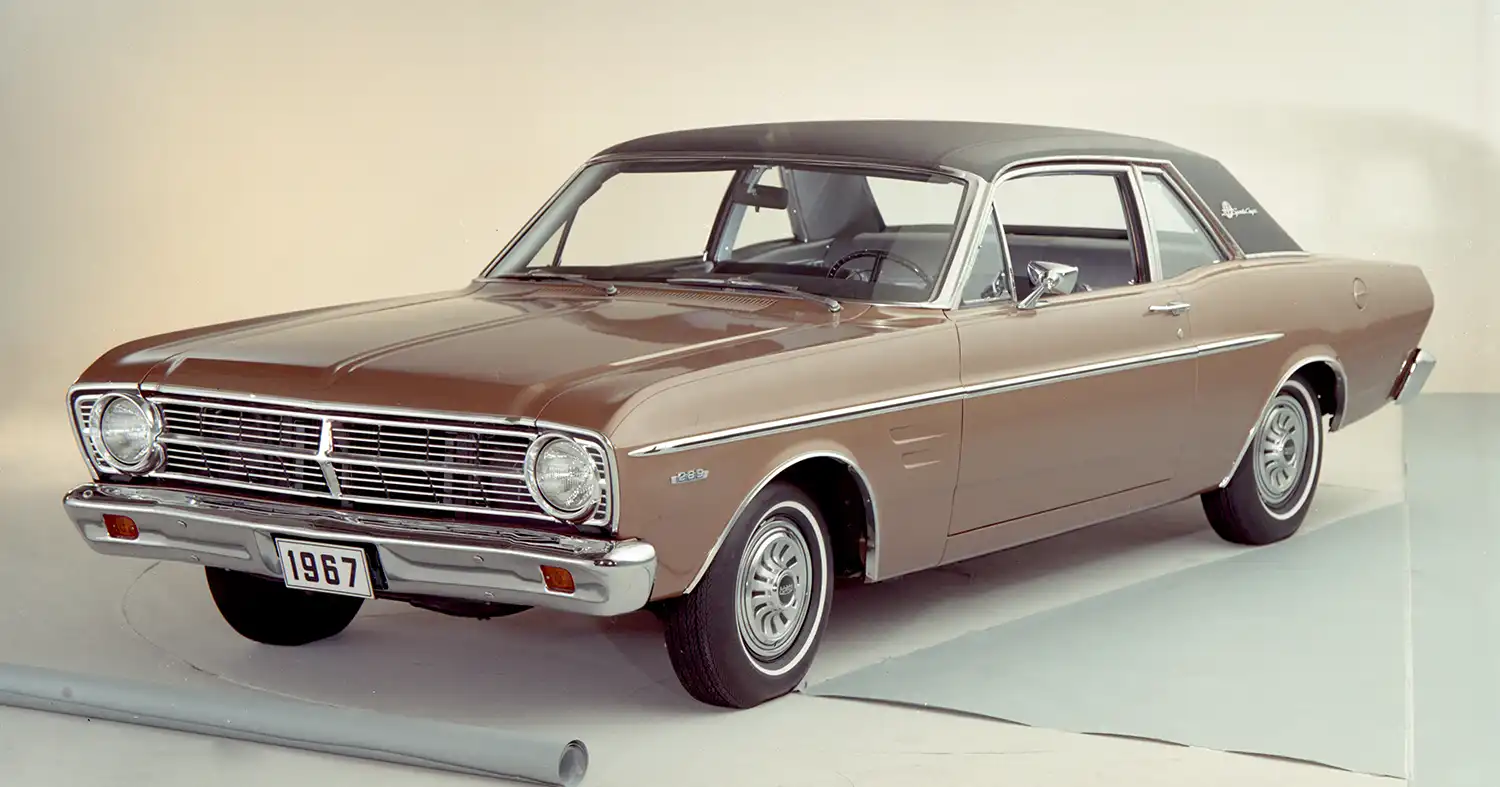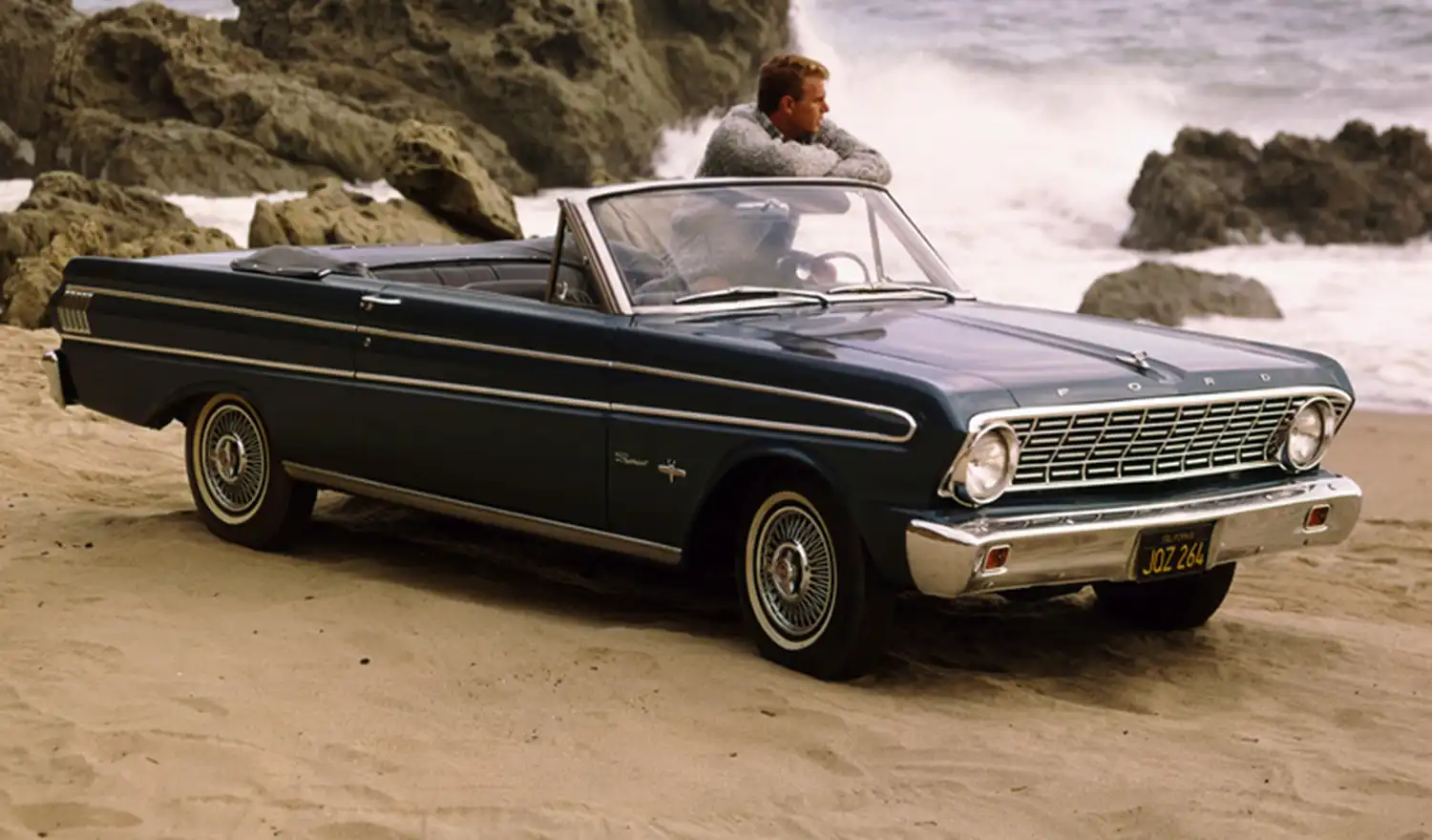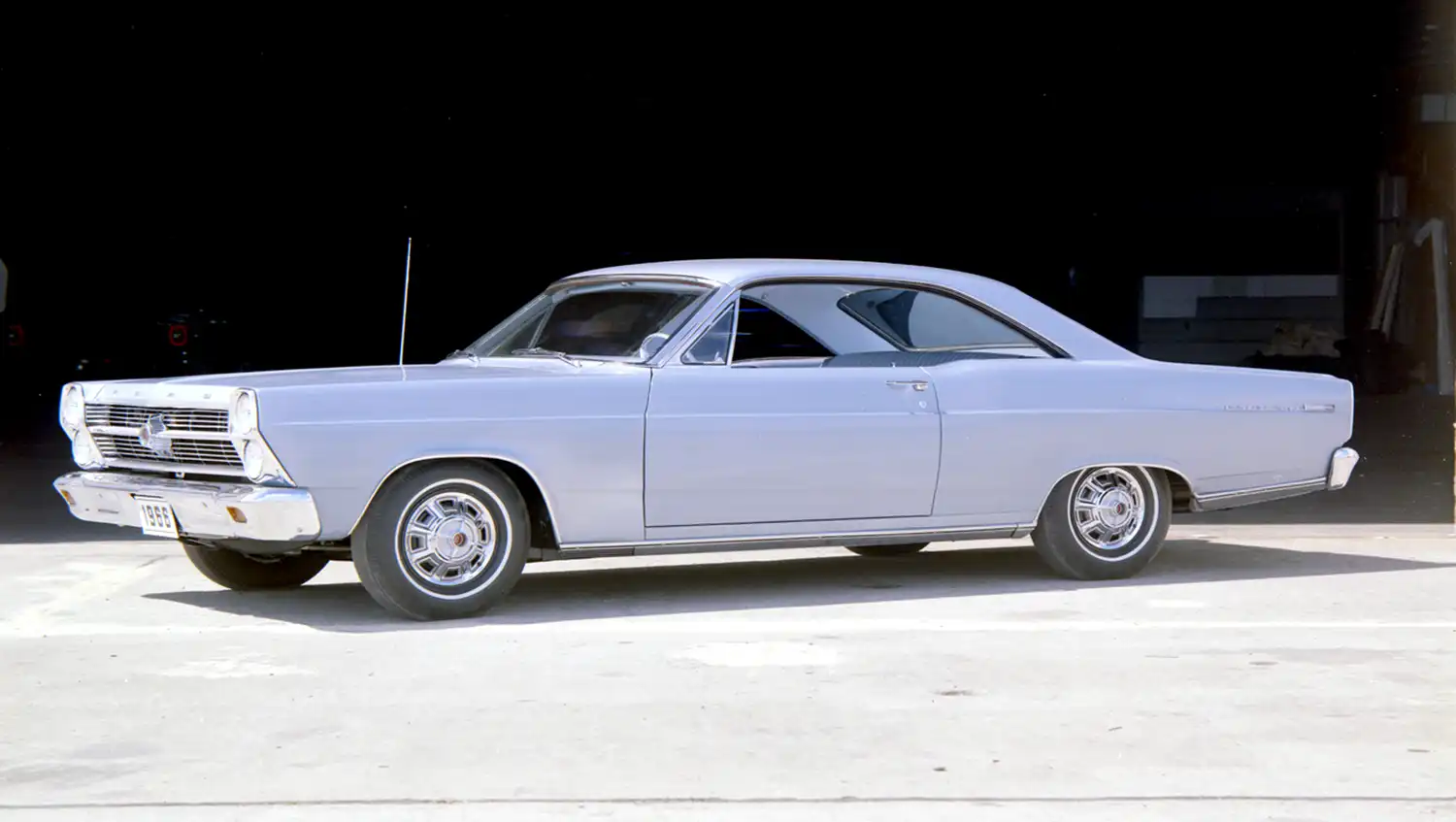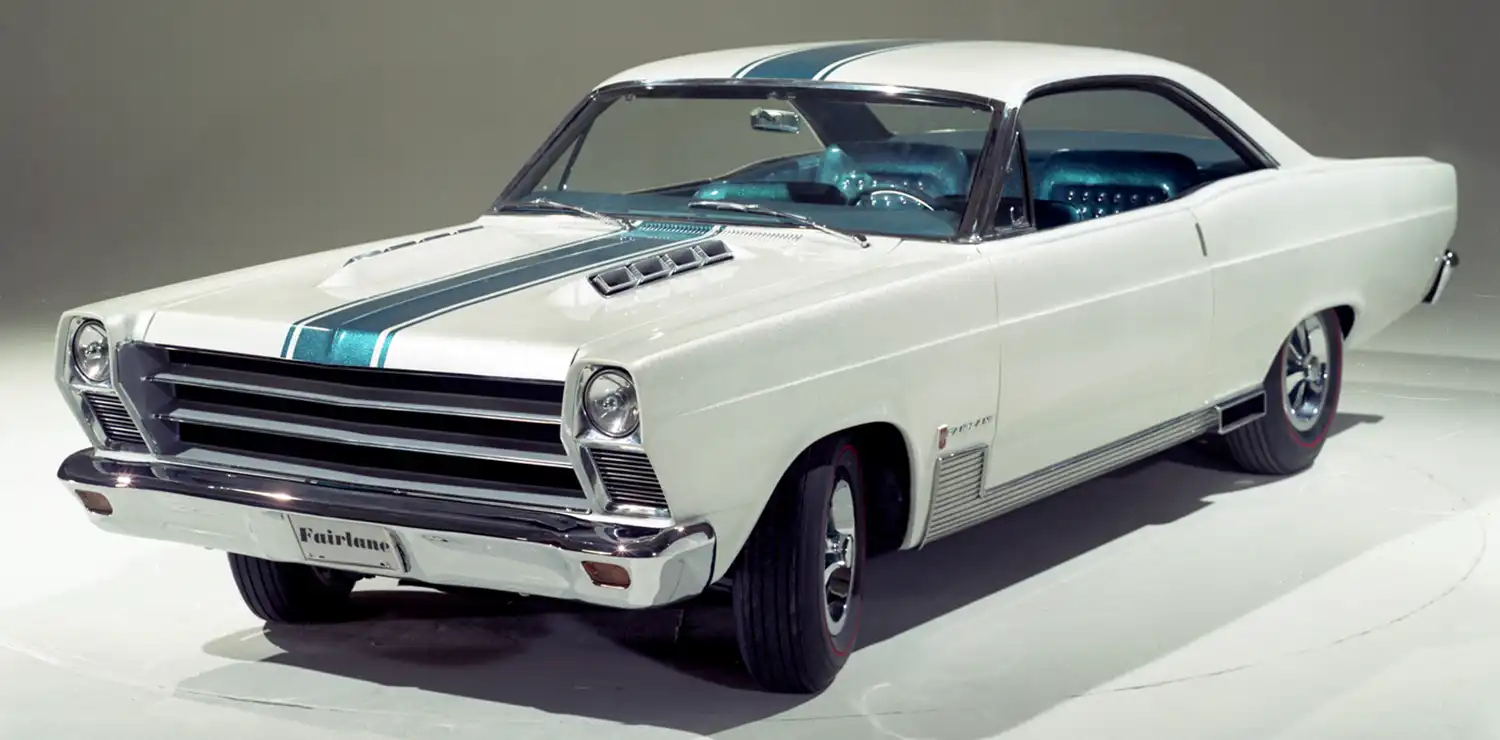
The 1966 Ford Fairlane GT-X two-door hardtop is a pivotal vehicle in the history of American muscle cars, marking a significant evolution for the Fairlane line. Introduced by Ford in 1962, the Fairlane initially served as an intermediate-sized car, bridging the gap between the compact Falcon and the full-size Galaxie. By its second generation, launched in 1966, the Fairlane had fully embraced the burgeoning muscle car craze, with the GT and GT/A models, and notably the GT-X designation, leading the charge. This particular year is often celebrated for its distinct styling cues, potent engine options, and strong performance credentials, solidifying its place as a revered classic. The 1966 GT-X represented Ford’s direct answer to the growing demand for powerful, stylish, and relatively affordable performance cars, appealing to a generation eager for speed and presence on the road.
Design and Exterior Presence: The 1966 Ford Fairlane GT-X two-door hardtop boasts a design that perfectly encapsulates the aesthetic of the mid-1960s muscle car era. Its body style is characterized by clean lines, a slightly formal roofline, and an overall athletic stance. The prominent grille, often featuring vertical bars, and the distinctive stacked headlights gave the front end a bold and commanding appearance. Chrome accents were strategically placed to highlight the car’s contours, contributing to its upscale yet aggressive look. The hardtop design, lacking a B-pillar, offered an uninterrupted flow from front to rear when the windows were down, a popular feature that enhanced the vehicle’s sleek profile. Special badging, including the GT-X emblem, subtly announced its performance pedigree, setting it apart from standard Fairlane models.
Interior Craftsmanship and Comfort: The interior of the 1966 Ford Fairlane GT-X was designed to complement its sporty exterior while offering a comfortable and engaging driving environment. Typically, these models featured bucket seats in the front, often trimmed in durable vinyl, providing excellent support during spirited driving. A console, frequently housing the shifter for manual or automatic transmissions, added to the sporty ambiance and offered practical storage. The dashboard was well-organized, with clear instrumentation that provided essential information to the driver. Features like a sport steering wheel further emphasized the performance orientation. While not as overtly luxurious as some larger sedans, the Fairlane GT-X interior struck a balance between functional design and a degree of comfort expected from a car of its class, making it suitable for both daily driving and weekend cruises.
Power and Engine Specifications: The heart of the 1966 Ford Fairlane GT-X was its impressive range of engine options, specifically engineered for performance. The most notable powerplant available for the GT-X was the formidable 427 cubic inch V8. This engine was a racing-derived unit, known for its robust construction and immense power output, making the Fairlane GT-X a true street brawler. While exact horsepower figures could vary depending on specific configurations (such as single or dual four-barrel carburetors), the 427 was generally rated at around 425 horsepower, delivering staggering acceleration and a thrilling exhaust note. Other powerful options for the Fairlane GT-X included the 390 cubic inch V8, which was also a strong performer, providing ample torque and horsepower for spirited driving. These engines were typically paired with either a heavy-duty four-speed manual transmission or a robust automatic transmission, allowing for efficient transfer of power to the rear wheels. The GT-X’s performance was not just about raw power; it was about delivering a compelling driving experience that cemented its status as a formidable muscle car on the street and occasionally on the track.
Chassis and Handling Characteristics: The 1966 Ford Fairlane GT-X utilized a body-on-frame construction, a common practice for vehicles of its era, providing a sturdy foundation. The suspension system, typically composed of an independent front suspension with coil springs and a live axle rear with leaf springs, was tuned to manage the car’s significant power and deliver a balance of ride comfort and handling. While not a nimble sports car, the GT-X was capable of confident cornering for its size and weight. The introduction of optional power steering and power brakes significantly improved the driving experience, making the car easier to maneuver and stop. Performance-oriented tires were often fitted to maximize grip, ensuring that the power from the V8 engines could be effectively put to the pavement. The overall chassis setup aimed to provide a stable and predictable ride, even at higher speeds, making the GT-X an enjoyable car to drive both on the highway and through winding roads.
Legacy and Collectibility: The 1966 Ford Fairlane GT-X holds a special place in the pantheon of classic American muscle cars. Its combination of elegant styling, robust construction, and potent engine options has ensured its enduring appeal among collectors and enthusiasts. The limited production numbers, especially for models equipped with the legendary 427 V8, contribute to its rarity and desirability. Today, the 1966 Fairlane GT-X is celebrated not only for its historical significance as a peak performer of its era but also for its drivability and timeless design. It represents a golden age of American automotive engineering, when manufacturers were pushing the boundaries of power and style to create iconic vehicles that continue to captivate generations. Its legacy is one of raw power, distinctive looks, and a compelling driving experience that remains highly sought after.
Summary
- The 1966 Ford Fairlane GT-X is a significant American muscle car from the second generation of the Fairlane.
- Features a classic mid-1960s hardtop design with clean lines, stacked headlights, and GT-X badging.
- Interior includes bucket seats, a console, clear instrumentation, and a sport steering wheel.
- Powered by potent V8 engines, most notably the 427 cubic inch V8 with up to 425 horsepower.
- Chassis features body-on-frame construction, independent front suspension, and a live axle rear.
- Offers optional power steering and power brakes.
- Highly collectible due to its performance, styling, and rarity, especially with the 427 engine.
Disclaimer: This article provides general information based on historical records and commonly available specifications. Prospective owners should always conduct thorough due diligence and verify all details of any specific vehicle.
Source: Ford Heritage Vault
AI Assistance: Gemini




